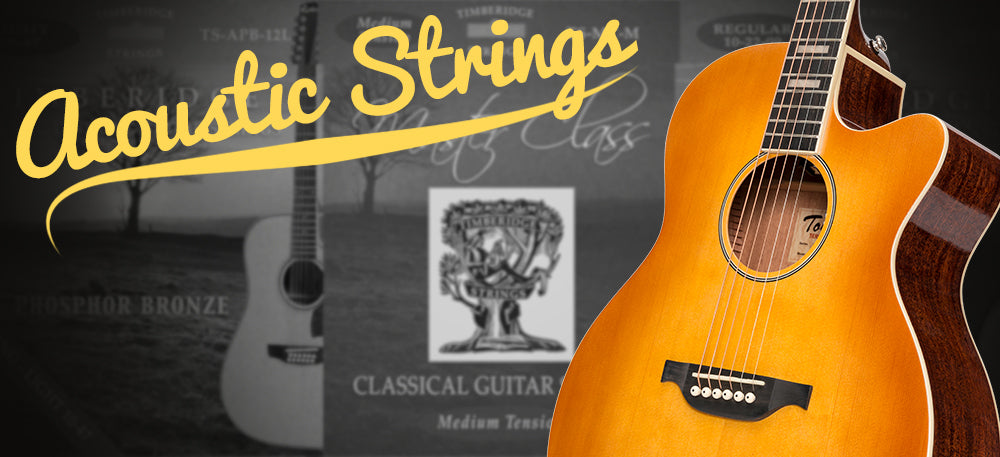
With all the different types of strings on the market, sometimes it’s hard to know what the best set for your instrument will be.
Many musicians neglect basic instrument maintenance, such as replacing worn and tired old strings, due to the lack of easily accessible information regarding the procedures and products.
But choosing the right strings for your acoustic instrument doesn’t need to be difficult; all you need to think about are tone, feel and application.

First, let’s talk tone.
The tone of your acoustic instrument can be greatly affected by the material composition of the strings you use. The most common material compositions used in the manufacture of acoustic strings today are 80/20 bronze and phosphor bronze.
80/20 bronze strings typically provide a crisp attack and clarity throughout the entire tonal range; although this clarity comes at the cost of sacrificing some tonal warmth.
On the other hand, phosphor bronze provides rich warmth and smooth treble response, but lacks the string definition and punch of 80/20 bronze.
Once you’ve decided which tone you prefer, the next thing to consider is feel.

You may not think about it, but the feel of your instrument can greatly influence the way it sounds.
Many people choose a string gauge based on the standard gauge for their instrument, or what their idol uses. This approach can be fine; however, you can often improve your tone by selecting a string gauge that compliments your personal playing style and technique. For example; the standard acoustic guitar string gauge is 12-53, 12-53 refers to the diameter of the thinnest and thickest string in the set, i.e. .012 - .053 mm.
12-53 is considered the standard acoustic guitar string gauge as they provide excellent volume and tonal projection, while retaining acceptable playability and comfort. But perhaps you play a 25.5” scale length dreadnought guitar with your fingers; and you want to sound like your favourite artist who uses a plectrum, and uses 12-53 strings on a 24.75” scale length OM model. In this scenario a 12-53 set will be have noticeably more tension on your longer scale dreadnought, resulting in a much tighter playing feel, increased effort required for equal sensitivity and significantly different volume and tonal output.
You could instead choose a 11-52 80/20 bronze set of strings, which would exhibit similar tension and feel on a 25.5” scale guitar, to that of 12-53 strings on a 24.75” scale guitar allowing you to pull off some of those trickier passages with greater ease. The 80/20 bronze composition also helps add some additional brightness to your finger picked sound, compensating for the lack of plectrum. Tonally, the 11-52 string set will also help tame some of the dreadnoughts bassy bottom end, resulting in a more balanced tone, and something closer to the OM sound we’re trying to emulate in the above example.

The final thing to consider now is application, which is generally a minor aspect of choosing a set of strings these days; and should really have been considered during the instrument buying process – but never the less, should be taken into account when purchasing strings.
When amplification was non-existent or very limit, musicians often relied on the use of heavier string gauges to achieve increased volume output of their instruments - but string choice is ultimately about compromise, and heavier gauge sets may significantly impact playability, and in some cases the longevity of an instrument.
If you’d like to slightly increase your acoustic instruments output, moving up a gauge of strings (12-53 to 13-56) is a simple and effective way to do this. However, bear in mind this small change may require additional setup changes; and may result in frets wearing faster, greater sensitivity to climate conditions, and increased risk of neck or face related issues – these issues can include lifting bridges, twisted necks, sunken faces or stress cracks.
While the above issues are rarely the result of just string gauge choice; if your instrument has already been stressed through climate or use, the increased tension of a higher gauge string set may be enough to tip it over the edge!
So as you can see, there’s many ways your choice of string can alter your instrument for better or worse – but one thing’s for sure, you won’t know until you try! So grab a couple of different sets and get experimenting.
